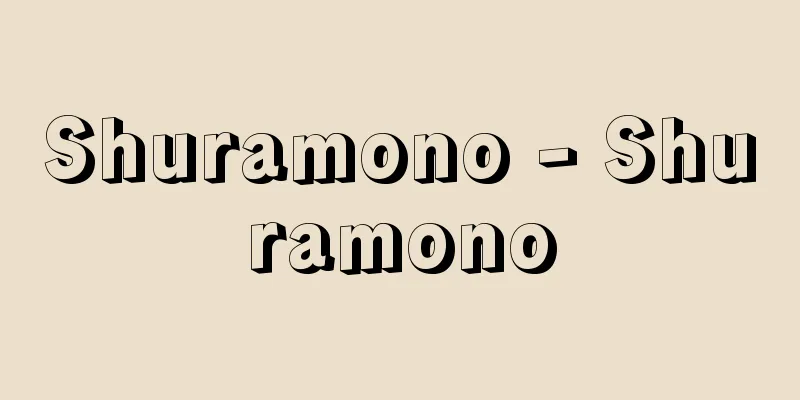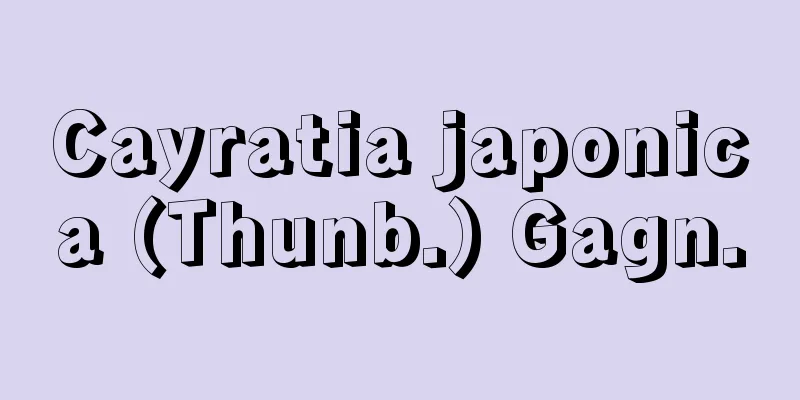Local Chronicles - Fudoki

|
Local history documents. The most famous are those compiled in response to an order in May 713 (Wado 6) that read, "Record the silver, copper, and colored plants, birds, animals, fish, insects, and other things that grow in the county, with their details and colors, as well as the fertility of the land, the origins of the names of the mountains, rivers, and fields, and any old tales or strange events handed down by the elders, and report them in the historical records" (Shoku Nihongi). The other is those submitted or newly created in December 925 (Encho 3) by a letter from the Dajokan (Grand Council of State). Representative examples of (A) Fudoki are the Izumo Fudoki, Hitachi Fudoki, Harima Fudoki, Hizen Fudoki, and Bungo Fudoki, while (B) mainly consists of old documents stored at national government offices. However, many of the Fudoki other than the five listed above only remain as fragments. The title "Fudoki" can be found in China in the Jizhou Fudoki by Lu Zhi of the Later Han Dynasty, as well as in the Jin Shu and Sui Shu, but it was not until the Heian period that the title "Fudoki" began to be used in Japan. In the Nara period, it took the form of a "Ge" (report document). The only complete copy of the "Fudoki" that has been passed down to the present day is the "Izumo no Kuni Fudoki," which was compiled in 733 (Tenpyo 5). The composer is said to be Miyake no Omi Kanatari of Akika County, and Izumo no Omi Hiroshima, Tairyo of Kuni no Miyatsuko Kane Io County. It has noteworthy features, such as recording the unique myths and legends of Izumo and not having any records of the Emperor's tours. The "Harima no Kuni Fudoki" lacks the articles on the beginning of the volume, Akashi County, and Ako County (although there is a fragmented text in Akashi County), and there are also missing parts in Kako County. It is thought to have been compiled relatively close to 713. The "Hitachi no Kuni Fudoki" does not include Shirakabe and Kawachi County, and there are many omissions in the eight counties from Niihari to Taka County. Based on records written up to 718 (Yoro 2), it is estimated that the compilation was completed around 722 or 723. Although the "Hizen no Kuni Fudoki" and "Bungo no Kuni Fudoki" have the opening chapters and the heads of each county, the articles on each county are incomplete, and it is believed that they were compiled within a few years after 732. The most noteworthy of the five Fudoki is the "Izumo no Kuni Fudoki," and it should not be overlooked that the people responsible for compiling it were the local Izumo no Omi Hiroshima and the Hitogami Taku no Omi Kintaro of Akika County. It has a different feel from the Fudoki of Harima and Hitachi, which were compiled by the kokushi class, and the Fudoki of Hizen and Bungo, which were compiled by bureaucrats of Dazaifu. In particular, the fact that the "Hizen no Kuni Fudoki" and the "Bungo no Kuni Fudoki" add local folklore through text from the "Nihon Shoki" shows that it is not possible to immediately conclude that all Fudoki are local history documents unique to each region. There are differences in content between the "Fudoki" compiled by local clans and those compiled by bureaucrats dispatched from the central government. In addition to the above-mentioned "Kofudoki," other works called "fudoki" were compiled in various places during the Edo period, such as the "Shinpen Musashi no Kuni Fudoki Ko," "Shinpen Aizu Fudoki," and "Kii Zoku Fudoki." [Masaaki Ueda] "Fudoki" edited by Akimoto Yoshiro ("Japanese Classical Literature Series 2", 1958, Iwanami Shoten)" ▽ "Exploring Ancient Japanese Culture: Fudoki" edited by Ueda Masaaki (1975, Shakai Shisosha)" ▽ "Fudoki" by Yoshino Yutaka (1969, Heibonsha)" Manuscript by Kantaro Kamitake and Kanzo Izumo, 1728 (Kyoho 13), held at the National Diet Library . "Izumo no Kuni Fudoki" Manuscript held at the National Diet Library "> "Hitachi no Kuni Fudoki" Description of Shikama County. Manuscript held at the National Diet Library . "Harima no Kuni Fudoki" Published in 1800 (Kansei 12) ( Owned by the National Diet Library ) "Hizen Province Topography" Manuscript held at the National Diet Library "> "Bungo Province Topography" Source: Shogakukan Encyclopedia Nipponica About Encyclopedia Nipponica Information | Legend |
|
地方誌的文書。713年(和銅6)5月の「郡内ニ生ズル所ノ銀銅彩色草木禽獣(きんじゅう)魚虫等ノ物、具(つぶ)サニ色目(しきもく)ニ録シ、及ビ土地ノ沃塉(よくせき)、山川原野ノ名号ノ所由、又古老相伝フル旧聞異事ハ、史籍ニ載セテ言上セヨ」(続日本紀(しょくにほんぎ))との命令によって編述されたもの(甲)、925年(延長3)12月の太政官符(だいじょうかんぷ)によって進上ないし新たに制作されたもの(乙)とが有名である。(甲)の風土記としては『出雲(いずも)国風土記』『常陸(ひたち)国風土記』『播磨(はりま)国風土記』『肥前国風土記』『豊後(ぶんご)国風土記』が代表的であり、(乙)は国庁(国の役所)で保管された旧文書を主とする。ただし前掲の五風土記以外の多くは逸文でしか残っていない。「風土記」という書名は、中国では後漢(ごかん)の盧植(ろしょく)の『冀州(きしゅう)風土記』をはじめとして『晋書(しんじょ)』『隋書(ずいしょ)』などにみえているが、日本で「風土記」という書名が用いられるようになるのは、平安時代に入ってからである。奈良時代の場合は「解(げ)」(上申文書)の形をとっている。 現在に伝えられている「風土記」のなかで、唯一の完本は『出雲国風土記』であって、733年(天平5)に成立した。勘造者を秋鹿(あきか)郡人神宅臣(みやけのおみ)金太理(かなたり)、国造(くにのみやつこ)兼意宇(おう)郡大領(たいりょう)出雲臣広島(ひろしま)とする。出雲在地の独自の神話伝承などを記し、天皇巡幸伝承がみえないなど、注目すべき特色を保有する。『播磨国風土記』は巻首と明石(あかし)郡、赤穂(あかほ)郡の記事を欠き(ただし明石郡には逸文がある)、賀古郡についても欠損部分がある。713年に比較的近い時期の成立と考えられている。『常陸国風土記』は白壁、河内(かふち)両郡はなく、新治(にいはり)から多珂(たか)郡までの八郡には省略が多い。718年(養老2)までの筆録をもとに、722、723年ごろに編述が完成したものと推定されている。『肥前国風土記』および『豊後国風土記』には巻首および各郡首はあるけれども、各郡の記事は不完全であり、732年以後数年の間に編集されたものとみなされている。 五風土記のなかでもっとも注目すべきものは『出雲国風土記』で、その編述の責任者が、在地の出雲臣広島と秋鹿郡の人神宅臣金太理であったことは見逃せない。播磨・常陸の風土記のように国司層、肥前・豊後の風土記のように大宰府(だざいふ)の官僚らによって編述されたものとは趣(おもむき)を異にしている。とくに『肥前国風土記』や『豊後国風土記』が、『日本書紀』の文によって地方の伝承を付会している点などは、風土記をすべて地方独自の地方誌的文書と即断しえないことを物語る。在地の氏族と中央派遣の官僚らの手になる「風土記」との間には、その内容に相違がある。 なお、以上の「古風土記」に対し、江戸時代にも『新編武蔵(むさし)国風土記稿』『新編会津(あいづ)風土記』『紀伊続風土記』など、風土記と称するものが各地で編纂(へんさん)された。 [上田正昭] 『秋本吉郎校注『風土記』(『日本古典文学大系2』1958・岩波書店)』▽『上田正昭編『日本古代文化の探究 風土記』(1975・社会思想社)』▽『吉野裕著『風土記』(1969・平凡社)』 神宅臣金太理・出雲臣広島勘造 写本 1728年(享保13)国立国会図書館所蔵"> 『出雲国風土記』 写本国立国会図書館所蔵"> 『常陸国風土記』 飾磨郡の記述。写本国立国会図書館所蔵"> 『播磨国風土記』 1800年(寛政12)刊国立国会図書館所蔵"> 『肥前国風土記』 写本国立国会図書館所蔵"> 『豊後国風土記』 出典 小学館 日本大百科全書(ニッポニカ)日本大百科全書(ニッポニカ)について 情報 | 凡例 |
<<: Hill of Fudoki - Fudoki no Oka
>>: Butung Island (English name) Pulau Butung
Recommend
Cinchona alkaloids
A general term for alkaloids obtained from the ba...
Ingeshu - Ingeshu
...refers to monks of noble origin (later includi...
lovat mixture
…(5) Lovat This is a relatively new fabric, creat...
Foam fire extinguishing equipment - Foam fire extinguishing equipment
…Fire extinguishers and simple fire extinguishing...
Hanagoke - Hanagoke
A type of lichen in the family Polytrichum. Found...
Edo Senke style
One of the schools of tea ceremony founded by Kaw...
Bleomycin
Anticancer antibiotic. A polypeptide with a molecu...
Shiritori Game - Shiritori Game
A game of connecting words by placing the end of t...
Masatake Terauchi
Marshal, Army General, and Politician. Born on Fe...
Artanancera - Altanancera
... When the Japanese laurel was first introduced...
Singing Skeleton - Utaigaikotsu
A folktale with the theme of karma and retribution...
Azam, CD - Azam
…He used clever lighting devices to create expres...
Hojo Ujiyasu
Year of death: 10/3/1571 (10/21/1571) Year of birt...
Kiseru Azami - Kiseru Azami
A perennial plant of the Asteraceae family (APG c...
Mount Taihei
It is the main peak of the Taihei Mountains in the...









